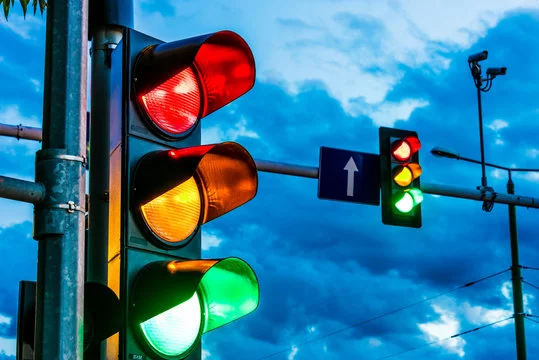What are the 3 most important colors of road signs? Would you like to find out? If yes, then carefully read through.
Road signs are the silent protectors of our travels. They provide both pedestrians and drivers with important information through their eye-catching colors and unique designs.
Of all the colors used in road signs, three stand out as being particularly significant. Each color has a distinct meaning that adds to the overall safety and effectiveness of our transportation systems. Let’s examine them and their relevance.
READ ALSO:
- International Driving Permit: Meaning, Facts and More
- How to Jumpstart a Car in 7 Easy Steps
- Vehicle Paper Renewal
- How Many CNG Stations are there in Nigeria?
3 Most Important Colors of Road Signs
Below are the most important colors of road signs:
Red: The Warning and Regulation Beacon
This is one of the most important colors of road signs. Given its natural connotations of urgency and danger, red is a color that draws attention. Red is typically used to indicate cautions and regulations on traffic signs.
This eye-catching color is used on yield, stop, and prohibition signs to draw attention from drivers and imply urgency.
Also, red indicates that in order to maintain a safe and orderly flow of traffic, you must stop, pay more attention, or follow certain regulations.
In addition to being associated with caution, red also has regulatory properties. It designates locations with restrictions, such no-entry zones, speed limits, or forbidden items.
Road signs’ striking red color serves as a visual deterrent, causing drivers to modify their driving style and pay closer attention to the road.
Yellow: The Color of Wariness and Vigilance
Road signs designed to warn drivers of possible hazards and changes in the road conditions have yellow as its primary color. This is because it is connected with brightness and visibility.
Yellow is an important color for reducing accidents and encouraging safe driving habits. It can be used to warn of impending curves, crossroads, and pedestrian crossings as well as to indicate construction zones and changes in traffic patterns.
Road signs intentionally use yellow since it is a highly visible color, recognizing that people tend to react fast to it.
This is one of the most important colors of road signs. It acts as a warning light, advising drivers to reduce their speed, be alert, and get ready for any obstacles that may arise.
Yellow is frequently used in warning signs, which greatly lowers the number of accidents and makes driving safer for everyone.
Green: The Direction and Guidance Symbol
This is a road sign that gives instructions and provide information about what is and is not acceptable.
Green is a color that is connected with harmony and guidance. This sign is frequently used to indicate motorways, highways, and directions, helping cars find their way to their destinations precisely and clearly.
Also, green signs are essential for avoiding confusion and guaranteeing a smooth flow of traffic, whether they are used to indicate the proper lane, the closest exit, or how to navigate complicated interchanges.
Additionally, it is used for informational signs about parking, rest spots, and amenities along the route in addition to directional signs.
Green is a relaxing color that promotes organization and order, which gives drivers the confidence to take calculated risks and drive into new areas.
Wrapping Up
The above are the most important colors of road signs. The colors red, yellow, and green stand out as the unsung heroes in the tapestry of road signs that crisscross our highways and side streets.
READ ALSO:
- Does CNG Burn More Efficiently than Petrol?
- How Hard is it to Convert a Vehicle to CNG?
- Does Police Clearance Expire in Nigeria?
They quietly arrange the parts that make up the harmonious and secure transportation system. These colors, each with a distinct meaning, blend together to convey important information to drivers, bridging language gaps and promoting a shared awareness of the law.
Let us not undervalue the importance of these three colors as we set out on our travels. They are the threads that weave the fabric of road safety and gently and precisely direct us to our destinations.




